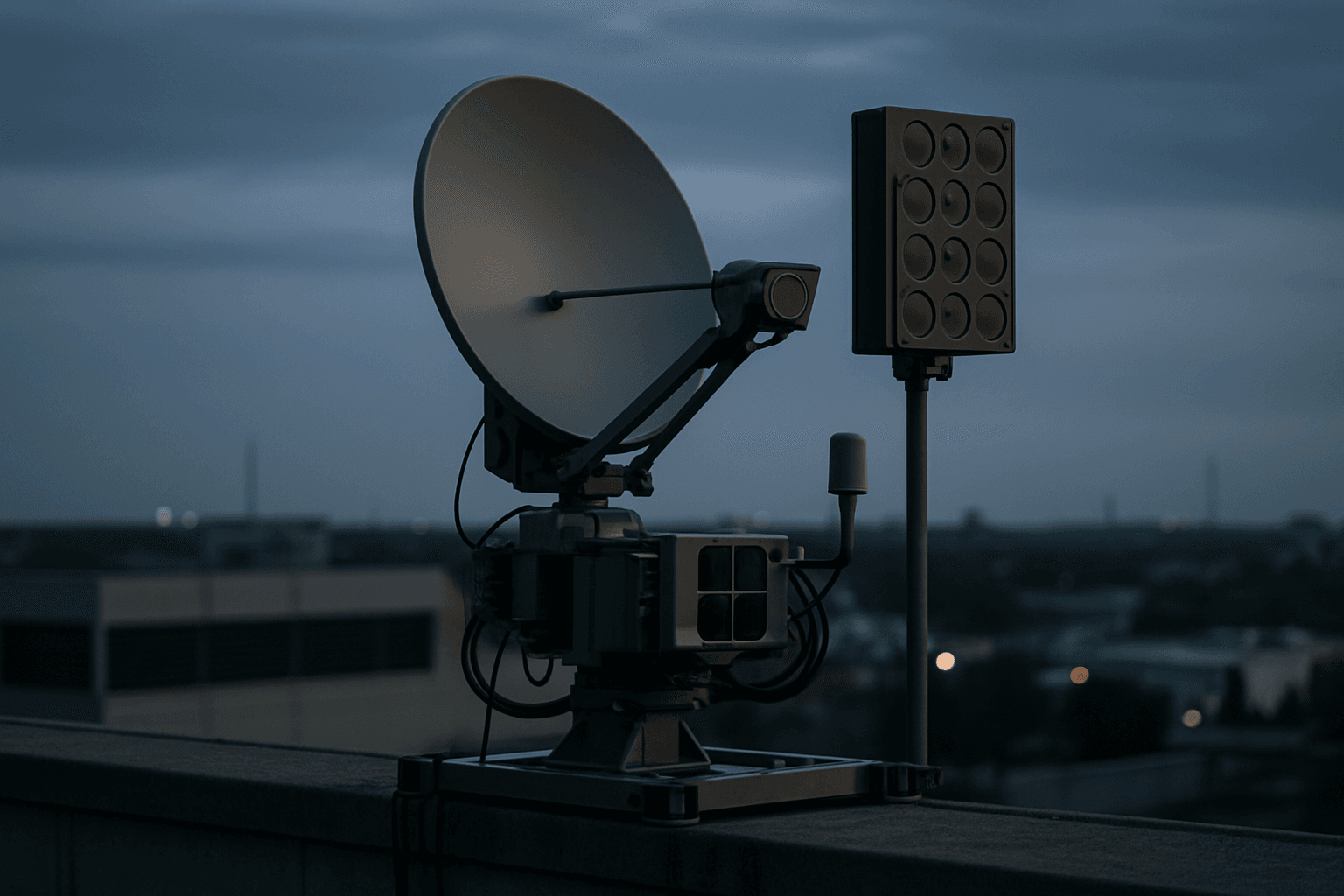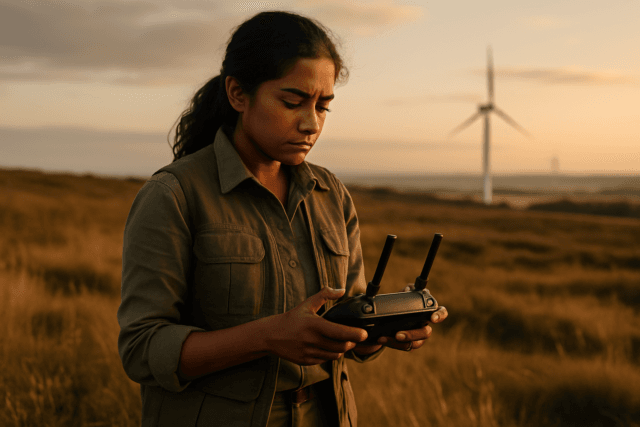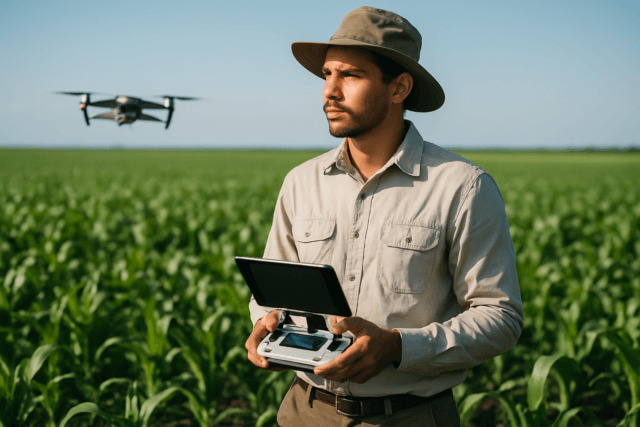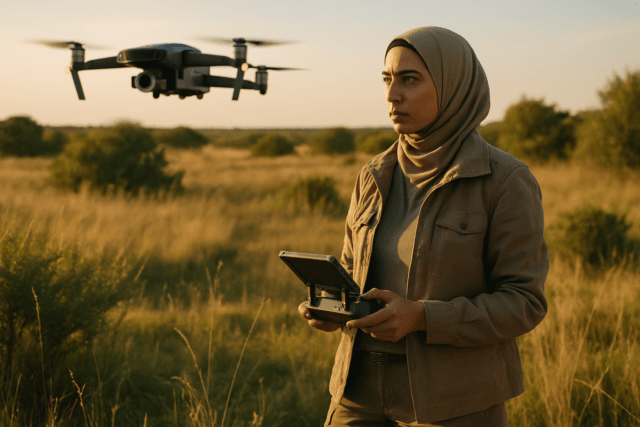The proliferation of drones has revolutionized various sectors, from agriculture to surveillance, but this increased accessibility also presents significant security challenges. Unauthorized drones pose risks to critical infrastructure, public safety, and privacy, necessitating effective drone detection systems. These systems are designed to identify, track, and monitor drones within a specific area, enabling authorities and organizations to respond swiftly to potential threats. The global drone detection market is experiencing rapid growth, driven by increasing security concerns and technological advancements, and is projected to reach $11.12 billion by 2030.
The Growing Need for Drone Detection
Drones are becoming increasingly prevalent, serving purposes from aerial photography to package delivery. However, this widespread use raises concerns about potential misuse:
- Security Risks: Unauthorized drones can disrupt events, invade private spaces, and pose risks to critical infrastructure like airports and power plants.
- Illicit Activities: Drones can be used for espionage, smuggling contraband, and even terrorist attacks.
- Airspace Violations: As drone usage scales, so do the risks of airspace violations and unauthorized surveillance.
Effective drone detection technology is crucial for safeguarding various environments, from private properties to critical infrastructure. It empowers law enforcement and enhances public safety measures significantly, ensuring that innovation does not come at the cost of security or peace of mind. Sky film studios in Elstree, UK, have already installed drone detection systems to protect intellectual property and ensure the safety of people and assets.
Key Components of Drone Detection Systems
Drone detection systems rely on several key components that work together to identify, track, and monitor drones effectively. These components employ different principles and methods, offering various advantages and limitations:
1. Radar Systems
Radar technology is a well-established method for drone detection. It works by emitting radio waves and analyzing the echoes that return after hitting an object, such as a drone.
- Long-Range Detection: Radar can detect drones at considerable distances, making it suitable for wide-area surveillance, such as airports or critical infrastructure.
- Real-Time Tracking: Once a drone is detected, radar systems can provide continuous tracking of its movement, enabling timely responses to potential threats.
- All-Weather Operation: Radar systems can operate in various weather conditions, unlike optical systems that rely on visibility and light levels.
Modern radar systems use advanced algorithms to filter out noise and distinguish between harmless objects and potential threats. They can also identify specific drone types based on their size or flight patterns.
Limitations of Traditional Radar:
- Small Size: Traditional radar systems struggle to detect increasingly miniaturized commercial drones with a small radar cross-section (RCS).
- Differentiation: Traditional radar systems often cannot distinguish between drones and birds, causing confusion and wasted time.
- Multiple Targets: Most radars cannot track multiple fast-moving small targets simultaneously, which is crucial when dealing with drone swarms.
Advancements in Radar Technology:
- Electronically Scanned Array (ESA) and Micro-Doppler: These technologies improve the radar’s sensitivity, making it easier to detect smaller drones.
- AI Algorithms: Modern systems leverage AI algorithms to distinguish drones from birds or debris in cluttered airspace.
- Solid-State Lidars: These are compact, reliable, and capable of detecting small drones.
- Multi-Wavelength Lidars: These enhance accuracy by analyzing different wavelengths.
2. Radio Frequency (RF) Analyzers
RF analyzers detect, identify, and track drones by analyzing the radio frequency signals emitted during communication between a drone and its controller.
- Early Detection: RF detection is particularly effective for monitoring unauthorized drone activity in restricted or sensitive areas, allowing for early detection before the drone becomes a visible threat.
- Identification: Some systems can identify common drone makes and models, and even the MAC addresses of the drone and controller.
- Triangulation: High-end systems can triangulate the drone and its controller when using multiple radio units spread far apart.
RF-based drone detection is considered one of the most efficient detection techniques, as electronic components aboard drones, such as radio transmitters and GPS receivers, emit energy that can be detected by RF sensors.
Limitations of RF Analyzers:
- Autonomous Drones: RF analyzers cannot detect autonomous drones that do not rely on RF communication.
- Crowded RF Areas: RF detection is less effective in crowded RF areas.
- 5G Networks: It can be difficult to detect drones controlled over 5G networks.
- Signal Libraries: Successful RF identification depends on libraries that require continuous reverse engineering and updating, which can be time-consuming and expensive.
Advancements in RF Analyzers:
- Enhanced Sensitivity: Improved sensitivity and spectrum analysis capabilities, coupled with AI and ML, enable accurate and real-time identification of drone signals among RF noise.
3. Optical Sensors (Cameras)
Optical sensors collect light at a range of wavelengths, including visible and infrared, as well as thermal radiation, to detect drones day and night.
- Visual Confirmation: Optical sensors provide visuals of the drone and its potential payload.
- Forensic Evidence: They can record images as forensic evidence for use in prosecution.
- AI-Powered Processing: Recent advances in optical sensor technology have improved resolution and processing power in the form of AI-powered detection, tracking, and classification.
Visual recognition systems can be integrated into existing surveillance cameras, enhancing security without requiring significant infrastructure changes. They learn to recognize specific features associated with drones, such as shape and movement patterns.
Limitations of Optical Sensors:
- Line of Sight: Optical sensors require a clear and direct line-of-sight, which is not always available in dense, crowded, or urban settings.
- Environmental Conditions: Darkness, fog, and rain can hinder the effectiveness of optical drone detection systems.
Advancements in Optical Sensors:
- High-Resolution Imaging: Rising demand for high-resolution imaging in defense and urban surveillance applications is driving the growth of optical systems.
- Thermal Imaging: Infrared sensors and thermal imaging allow drones to capture detailed images and perform specialized tasks like inspections or agricultural analysis.
4. Acoustic Sensors (Microphones)
Acoustic sensors use microphones or microphone arrays to detect the sound made by a drone and calculate its direction.
- Autonomous Drone Detection: Acoustic sensors detect all drones within the near field, including those operating autonomously (without RF emissions).
- Ground Clutter Detection: They detect drones in ground clutter where other technologies can struggle.
- Mobile and Deployable: Acoustic sensors are highly mobile and quickly deployable.
- Passive Operation: They are completely passive and do not require a license to operate.
Acoustic sensors can differentiate between various noise patterns, identifying specific frequencies associated with drone engines.
Limitations of Acoustic Sensors:
- Limited Range: Acoustic sensors have a limited range.
- Environmental Noise: They are susceptible to environmental noise.
- False Positives: They can produce false positives.
Advancements in Acoustic Sensors:
- Microphone Arrays: The use of microphone arrays enables triangulation for precise localization.
- Machine Learning-Based Classification: Machine learning distinguishes drones from other ambient sounds.
5. Integrated Systems
Advanced solutions combine multiple detection technologies, such as RF, optical, and acoustic sensors, to provide comprehensive coverage.
- Enhanced Security: These systems offer a higher level of security and can be tailored to meet specific needs.
- Sensor Fusion: Combining LiDAR, thermal imaging, acoustic sensors, and traditional radar into unified platforms enables more robust threat detection, particularly in urban or densely cluttered environments.
Multi-sensor data fusion approaches improve detection and tracking accuracy, showcasing the potential of combining data from various sensors to improve performance in different environments.
Functionality of Anti-Drone Systems
Anti-drone systems primarily function in three categories:
1. Drone Detection
The system must detect the presence of a drone before it can be identified and neutralized. Detection can be done using radar systems, RF sensors, and cameras.
2. Drone Identification
Once a drone has been detected, the anti-drone system must identify it. Identification can be made using secondary radar and RF sensors. Accurate identification is crucial as it allows the system to determine whether the drone is authorized or unauthorized.
3. Countermeasures
After a drone has been detected and identified as a threat, the anti-drone system can deploy countermeasures to neutralize it. Countermeasures can include:
- Jamming: Disrupting the communication link between the drone and its operator.
- Spoofing: Sending false GPS signals to the drone, causing it to fly off course.
- Netting: Capturing the drone with a net.
- Lasers: Using high-energy lasers to disable or destroy the drone.
Technological Advancements in Drone Detection
Technological advancements like AI, ML, advanced radars, and RF detectors are helping anti-drone systems improve at a rapid pace.
1. AI and Machine Learning
AI and ML not only help provide a prompt response to unauthorized drones but also track and record flight patterns and other drone data.
- Improved Navigation: AI-powered drones can navigate through complex environments and avoid obstacles with greater accuracy.
- Enhanced Surveillance: ML algorithms can analyze data from drone sensors, enabling real-time object detection and tracking.
- Autonomous Decision-Making: AI-enabled drones can make decisions autonomously, such as identifying and engaging targets.
The integration of ML and AI in drone detection represents a significant advancement in security technology, offering a potent blend of data-driven analysis, adaptive learning, and real-time threat mitigation capabilities.
2. Sensor Fusion
Combining data from various sensors, such as cameras, microphones, radar, and LiDAR, enhances accuracy and reliability.
- Improved Detection: Multi-sensor systems improve detection accuracy and tracking reliability compared to single-sensor approaches.
- Comprehensive Threat Management: Advanced systems now leverage multi-sensor fusion, combining radar, radio frequency (RF) monitoring, and electro-optical/infrared (EO/IR) detection.
3. Autonomous Systems
AI-powered autonomous detection and neutralization of threats with minimal human intervention are becoming more prevalent.
- Real-Time Data Analysis: AI enables anti-drone systems to analyze vast amounts of data in real-time, improving their ability to detect and respond to threats.
- Predictive Analytics: By analyzing patterns and trends, AI can help identify potential drone threats before they materialize, allowing for proactive measures to be taken.
The UK’s Counter-Drone Framework
The UK has established a comprehensive regulatory framework for drone operations, with the Civil Aviation Authority (CAA) overseeing and regulating all aspects of civil aviation. Key legislation includes:
- The Air Navigation Order (ANO) 2016: Sets out requirements for crewed aviation, and some also apply to uncrewed aircraft, with regards to key safety principles.
- The Basic Regulation (BR) 2018/1139, the UAS Implementing Regulation (IR) 2019/947, and the UAS Delegated Regulation (DR) 2019/945: Dedicated to UAS operations.
- The Wireless Telegraphy Act 2006: Regulates the use of wireless equipment, including jamming devices, ensuring the responsible use of the electromagnetic spectrum.
The UK CAA is committed to supporting the safe expansion of drone use while making it easier for users to understand and follow safety rules. Updated regulations include clearer rules for drone operations, increased education requirements, drone product standards, and implementation of Direct Remote ID requirements.
Challenges and Considerations
Despite the advancements in drone detection technology, several challenges and considerations remain:
1. Regulatory and Legal Barriers
Ambiguities surround the legality of current anti-drone and drone detection systems in the UK and many other parts of Europe. Taking control of a commercial drone, for example, would be covered by the same laws that stipulate against taking control of a manned airline illegally.
2. High Costs of Implementation
Anti-drone systems can be expensive, requiring organizations to compromise on functionality. With such a high price tag, many will need to compromise on functionality.
3. Evolving Threat Landscape
Drone technology is rapidly evolving to withstand most existing anti-drone devices. Traditional radars may not pick up on small or miniature, lightweight drones, cameras may fail in poor visibility, and acoustic sensors may not detect accurately in noisy environments.
4. Minimizing False Positives
Ensuring scalability and minimizing false positives remain challenges while using drone detection methods. Differentiating small drones from other flying objects, such as birds, remains a challenge.
The Future of Drone Detection
The future of drone detection is being shaped by several major trends:
1. AI-Powered Systems
The emergence of AI-powered navigation and detection systems modeled on neural networks is one of the most promising developments. This kind of predictive modeling could become a cornerstone of advanced counter-UAS strategies.
2. Multi-Sensor Integration
The growing integration of multi-sensor systems, combining LiDAR, thermal imaging, acoustic sensors, and traditional radar into unified platforms, enables far more robust threat detection.
3. Active Counter-UAS Measures
Active measures like laser interception systems, RF signal jamming, and even drone-netting solutions are moving from research labs into real-world deployments.
4. Cloud-Enabled Threat Intelligence
Real-time data sharing across defense networks to enhance situational awareness and response capabilities is becoming more prevalent.
The drone detection market is poised for substantial growth in the coming years, driven by increasing security threats, technological advancements, and government initiatives. By investing in next-generation anti-drone technologies, organizations can proactively address emerging threats and ensure the safety and security of their operations.





